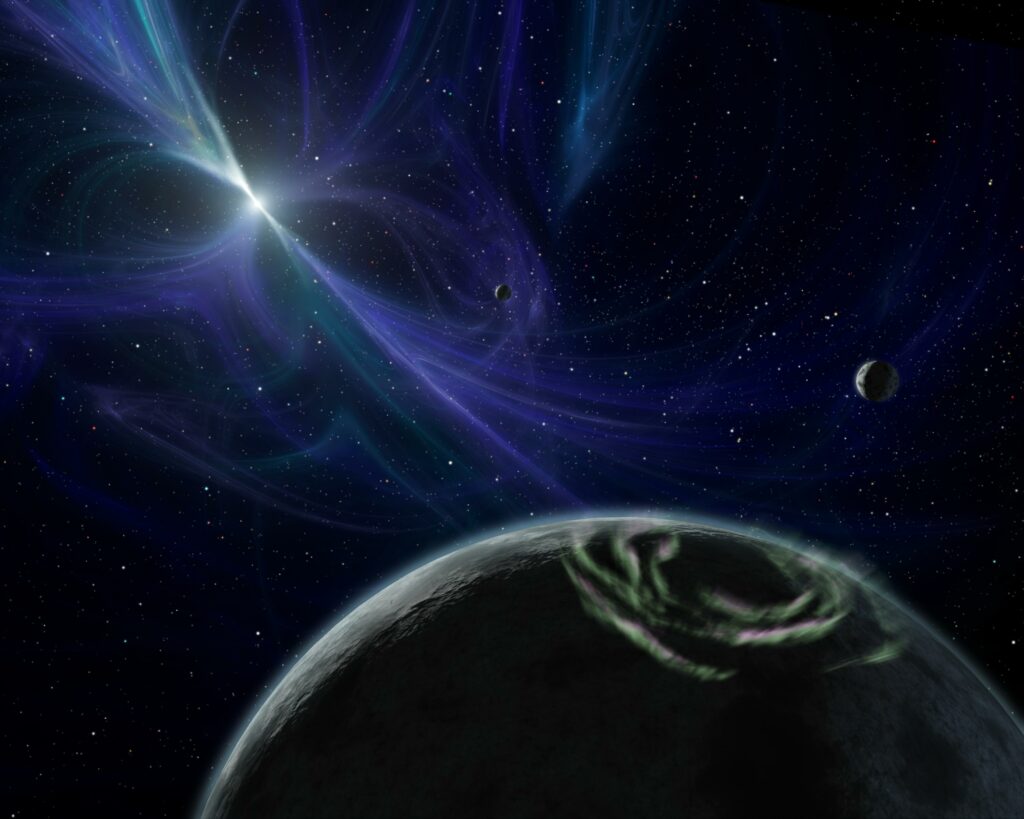Astronomers have revealed in a new study that the first group of exoplanets ever discovered may be incredibly rare. The exoplanet system was found 30 years ago around a rapidly rotating star, called a pulsar. It’s currently not known how the processes cause planets to form and survive around pulsars. Researchers analyzed 800 pulsars followed by the Jodrell Bank Observatory over the last 50 years and found that less than 0.5% of all known exoplanets could host Earth-mass planets.
Pulsars are the densest stars in the universe and born during powerful explosions at the end of a typical star’s life. These pulsars are stable, rapidly rotating and have strong magnetic fields. They also emit beams of bright radio emission from their magnetic poles that appear to pulse as the star rotates.
“[Pulsars] produce signals which sweep the Earth every time they rotate, similarly to a cosmic lighthouse,” says Iuliana Nitu, a PhD student at the University of Manchester, in a statement. “These signals can then be picked up by the radio telescopes and turned into a lot of amazing science.”
Astronomers discovered the first-ever exoplanets orbiting a pulsar dubbed PSR B1257+12 in 1992. The pulsar and three radiation-doused planets are all that remains of the dead star system.
Since the discovery 30 years ago, a handful of pulsars have been found to host planets. “However, the extremely violent conditions surrounding the births and lives of pulsars make ’normal’ planet formation unlikely, and many of these detected planets are exotic objects (such as planets made mostly of diamond) unlike those we know in our Solar System,” the researchers explain.
In performing the largest search for planets orbiting pulsars to date, University of Manchester astronomers looked for signals that indicate the presence of planetary companions with masses up to 100 times that of the Earth, and orbital time periods between 20 days and 17 years. Astronomers detected 10 potential pulsars, with the most promising in the system named PSR J2007+3120. It’s believed this pulsar hosts two planets, with masses a few times bigger than the Earth, and orbital periods of 1.9 and 3.6 years.
Since these planets orbit their stars on highly elliptical paths, astronomers say, “this indicates that the formation process for pulsar-planet systems is vastly different than traditional star-planet systems.”
“Pulsars are incredibly interesting and exotic objects,” explains Nitu. “Exactly 30 years ago, the first extra-solar planets were discovered around a pulsar, but we are yet to understand how these planets can form and survive in such extreme conditions. Finding out how common these are, and what they look like is a crucial step towards this.”
The study was presented at the National Astronomy Meeting.












